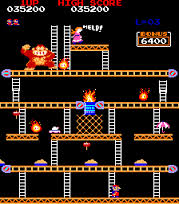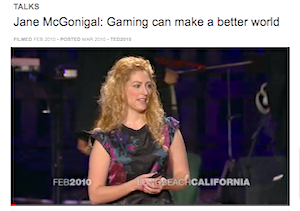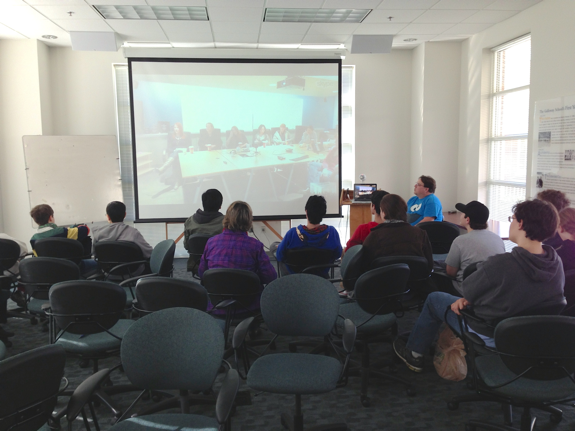Storytelling: Games, Coding and Student Writing

During this year’s Computer Science Education Week (specifically on Dec 11th), I saw the other side of “The Hour of Code” campaign. Many schools around the world are beginning to include computer science and programming instruction in their math and language arts classes. At my school, we also saw the inclusion of some great discussion about narrative and story in our computer science special event.
For the past three years, The Galloway School in Atlanta, GA has had the opportunity to connect with video game developers at BioWare in Edmonton, Alberta. Melanie Fleming, a localization producer* for the company, recruits programmers, directors, writers, level editors, quality assurance — any and every facet of the game industry — to spend an hour talking with my students who are learning programming by making their own games with MIT’s Scratch software.
Every fall the event grows more amazing, and it is a true highlight of my school year. The last two years we’ve expanded to two hour-long sessions to accommodate a larger number of students and a wider range of student interest. I am grateful that talented professionals would give up their time to encourage and inspire the next generation. A nice additional touch: the panel is predominately women, subtly reinforcing the idea that girls can and should excel in the technology fields.
The tale comes first
This year, while talking about game designs and career paths, one word came up repeatedly — story. What makes a great game so engaging is that it tells a fantastic story, one that transports the player to another world, just like an all-consuming book does.
Yes, the game needs excellent programming, awe-inspiring graphics and sound effects that make the unreal real, but all of those things are built upon the story. The most brilliant code and the most challenging game level ever designed all serve to advance the story.
During an hour set aside to promote and celebrate programming, our students heard a ringing endorsement for writing, grammar and vocabulary skills; the art of language arts.
Every video game has a story

Back then you jumped the barrels, ate the power pellets, and shot the aliens. It was all pretty straight forward. Now we have many choices; how you play a game changes the progression, the outcomes and even in some games, the environment. We no longer play one at a time; we play together in pairs and groups and clans. We are no longer singular heroes; we are guilds. We can even fight against other players in head to head matches or against other teams in capture-the-flag tournaments.
But no matter how complex, it all comes down to telling a good story.
The learning potential of well-told games

I applaud the language arts teachers who took a big step and taught coding in their classes. I would also encourage technology teachers to flip this idea with students. Make a game that tells a story too. Write up the history of the main character, the adversaries and the world in which they live. Explore the tension between the wicked witch and the fair princess, why the witch stole the prince and why the princess has to rescue him. Yes, turn the traditional roles on their heads and see how the story changes. Whatever you do, tell the story. Its been said there are only eight plots in the world (or seven, four or three depending on which literature class you took in college).
The responsibility for telling those archetypal stories has evolved from bards and minstrels to written words, from playwrights and poets to silver screens, TV screens and now to virtual worlds. With virtual reality seemingly ever closer as tools like Oculus Rift emerge, I am certain of two things. We will need programmers and inventors, engineers and scientists to create these bold new frontiers. We will also need writers, poets, artists and dreamers to imagine those worlds first.
And they all in your classrooms now.
*Note: A localization producer is responsible for the changes that happen to a game when it is released in other countries around the world. Not just that the language is translated correctly but that cultural norms and non-verbal cues are respected and the overall feel of a game is similar even if scenes or events are different. So, yeah, she’s pretty awesome.
Mark Gerl is a learning technology coordinator at The Galloway School in Atlanta, GA where he teaches computers and programming concepts. Before becoming a teacher he was a network designer and retail account executive for a computer reseller. Way before that “I was the kid who built with LEGO and Erector sets and Tinkertoys and would take the motors out of toy cars to make cranes that would lift buckets and such.” His love of building, playing with and making things persists.
































Great post, and I appreciate the focus on the narrative story frames of game design. (I do that, too).
Kevin